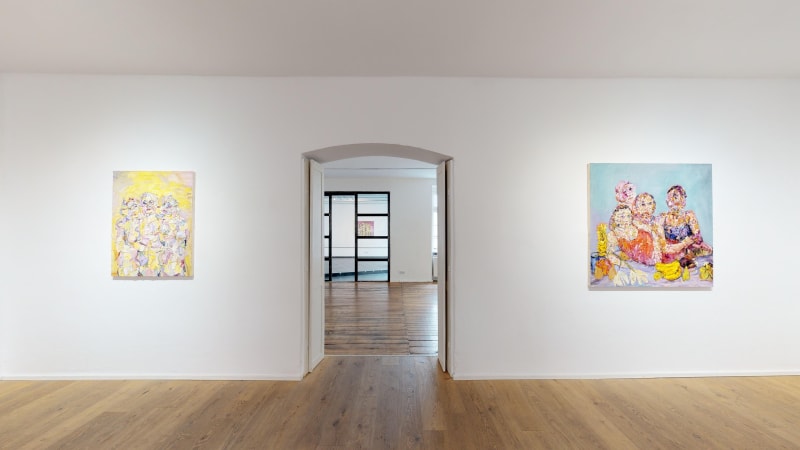Private View: 12th of September, 18:30 - 21:00
Through thick impasto strokes, groups of women emerge melting into one another against swirling abstract backgrounds. The figures appear writhing, pink and fleshy, a combining mass that is simultaneously a single entity and an expression of multitude. Los Angeles-based artist Vanessa Prager presents her latest body of work entitled ‘Mirror, Mirror’ at Kristin Hjellegjerde Berlin.
Though the human body is a recurring theme in the artist’s work, her figures in this latest series take on a new looseness, breaking down physical boundaries to form abstract visualisations of identity in which the individual is able to slip between multiple personalities. As Prager notes this slippage can provide access to a deeper empathy, which is envisioned through the merging of the artist’s figures. ‘See through you’, for example, depicts an entwined, moving mass of bare skin, which is suggestive of a sexual embrace and yet, we are unable to distinguish between bodies. The title of the work goes further to imply an element of performance in which the painting is somehow revealing the true nature of the being.
Prager’s artistic process itself is heavily layered, involving the reworking of an initial sketch and the gradual building up of paint to create a textural surface. The final artwork combines an amalgamation of deconstructed and reconstructed images, and in this sense, it is a practise of both obstruction and revelation, of fragmentation and unity. It is these opposing tensions that make the works so dynamic, giving the impression of constant movement and transition.
‘Fruit Plate’, by contrast, offers a bold tableau set against a flattened background. Here, we have four figures lounging amidst pieces of fruit as if set up for a still life. Their presence is at once strangely unnerving and challenging. The offering up of these human bodies as objects to be viewed and manipulated for the artist’s gaze possesses sacrificial connotations, whilst playing with the tradition of still life itself in which material pleasures (usually food or wine) are both celebrated and lamented for their ephemerality. Whilst Prager offers a comment on her own practise as an artist and therefore, an objectifier, she also provokes questions around the construction of identity as both image and performance.
‘Mirror, Mirror’ plays with the gaze as we search for human silhouettes hidden within Prager’s melting daubs of colourful paint. It is a game as much as it is an expression of fluidity and freedom. These works are an invitation to consider the infinite possibilities of self.


